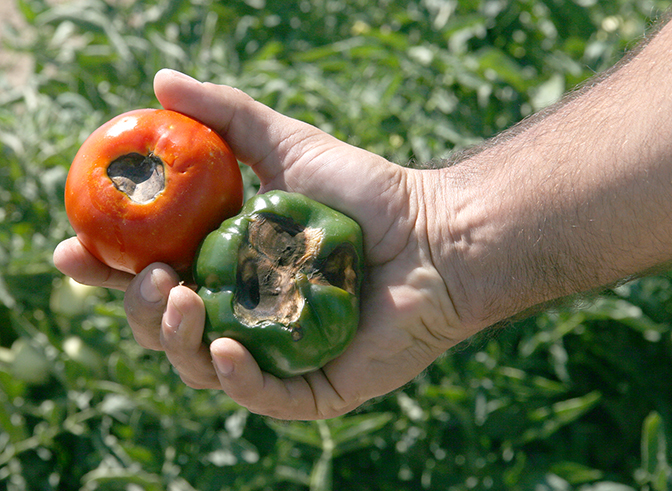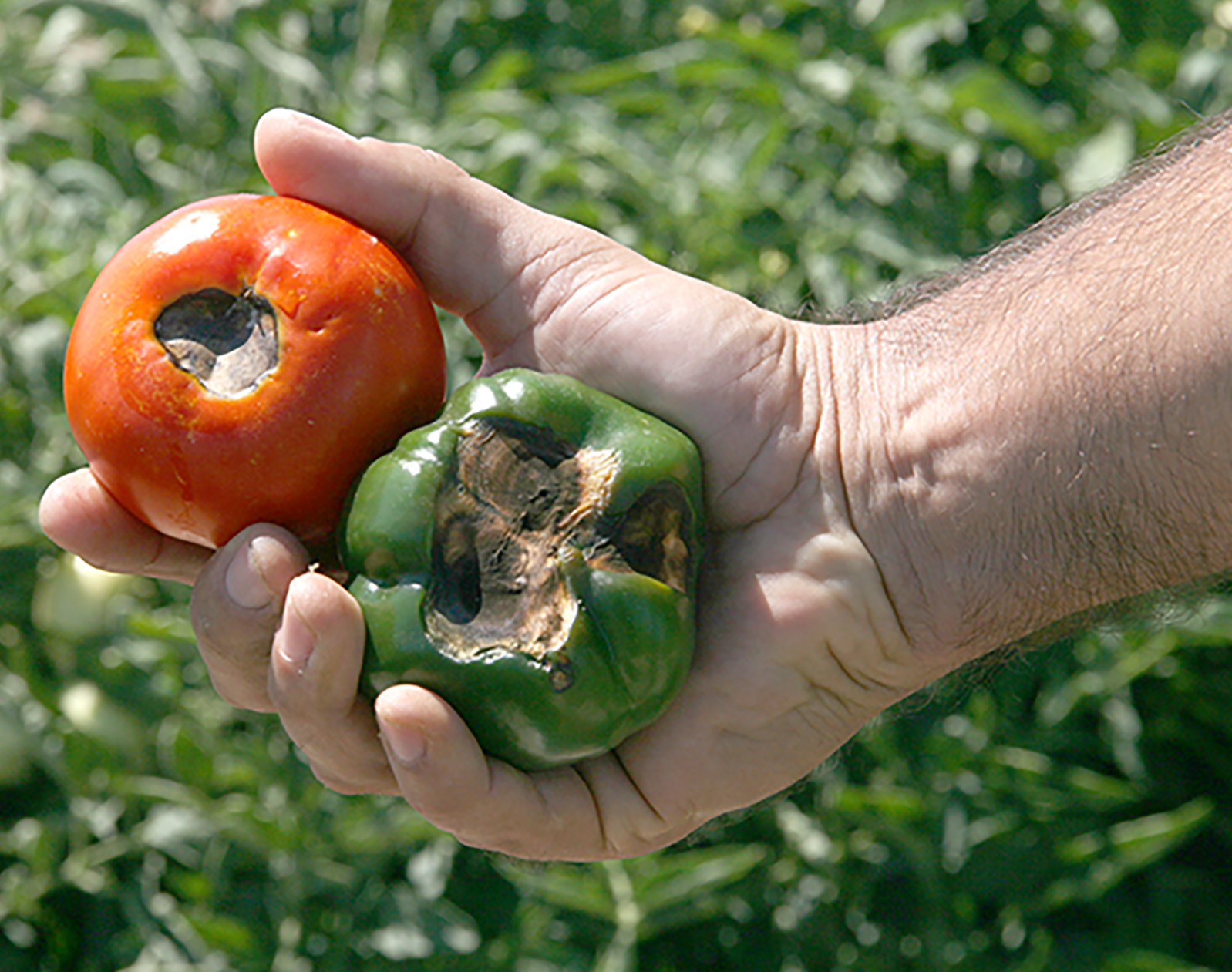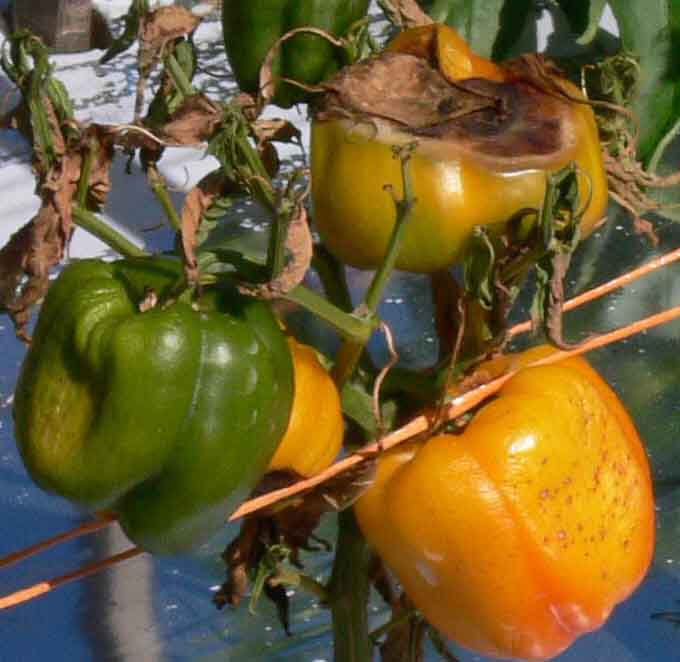Georgia’s bell pepper farmers experienced a setback in production this spring. According to University of Georgia vegetable horticulturist Tim Coolong, some Georgia growers experienced losses of up to 25 percent due to blossom end rot — a calcium-related disorder.
The disorder, which affects mostly peppers and tomatoes, can also impact eggplants and most cucurbits. A calcium deficiency in young, rapidly expanding fruit tissue causes cells to die. As the fruit expands and grows, the condition makes it appear as if a large portion of the blossom end is brown or black. Fruit affected with the disorder is fine to eat, but it is unmarketable.
“During growth there can be a period when calcium uptake into the cells of the developing fruit is restricted,” Coolong said. “That could be due to a true calcium deficiency or, more often than not, particularly here in Georgia, it’s usually due to a weather or growing environment-related factor that’s prohibiting uptake of calcium into the plant.”
Bell peppers are Georgia’s second most produced vegetable behind watermelons, accounting for almost 14 percent of the state’s vegetable production in 2013, according to the UGA Center for Agribusiness and Economic Development. Bell peppers generated $138.9 million in farm gate value.
Coolong believes spring production may be down this year because of Georgia’s volatile weather in the spring and early summer.
“We had some issues with sizing of fruit, and then during late April and part of May, it turned very dry and fairly hot after it had been consistently wet,” Coolong said. “I think that, during this period, some of our tomato and pepper plants hadn’t fully developed a deep root system due to that prior wet weather we had. When it turned dry, there may have been times when it was challenging to keep up with some of the water requirements.”
Most of Georgia’s 6,600-plus acres of bell peppers are grown under plastic mulch. However, since peppers are generally produced on double rows, water has to move toward the shoulder of the plant bed, further than a tomato, for instance. Irrigation can be a challenge, especially on the sandier soils in southwest Georgia.
“If it had been a little drier earlier on, we may have had deeper root development,” Coolong said. “In bare ground crops where we get a real wet spring and then it turns dry, we have a fairly shallow root system. I think that may have been the case here as well.”
For more information about Georgia’s vegetable production, see caes.uga.edu.









